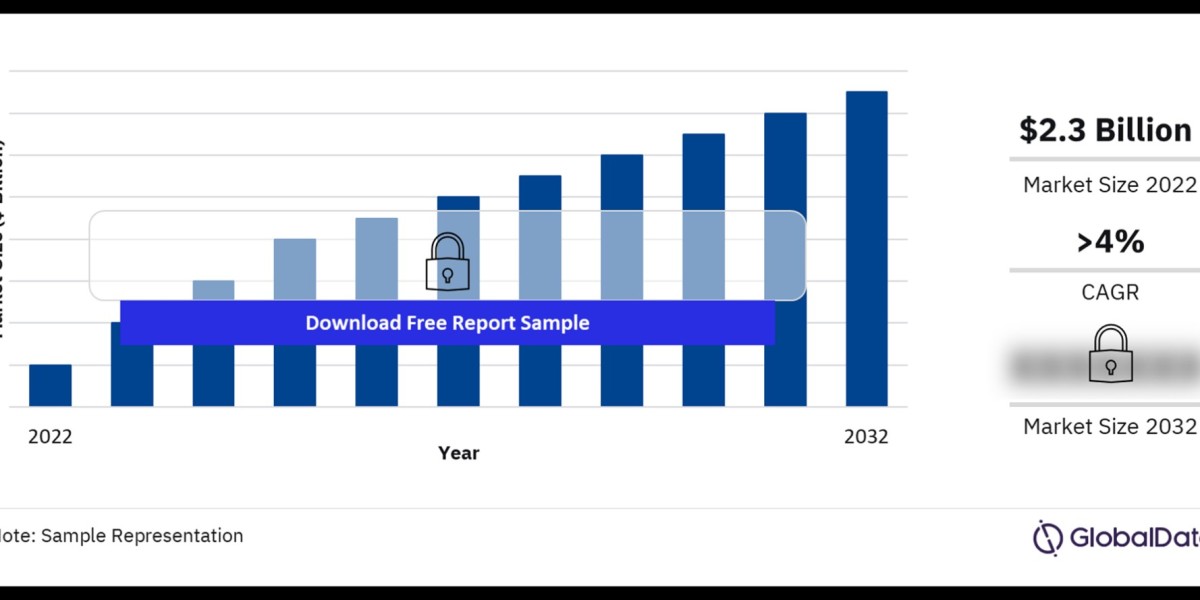Introduction to Acute Myeloid Leukemia (AML)
Acute Myeloid Leukemia (AML) is an aggressive form of cancer that originates in the bone marrow, where it disrupts the normal development of blood cells. Acute Myeloid Leukemia Market AML primarily affects white blood cells but can also interfere with the production of red blood cells and platelets. It is characterized by the rapid growth of abnormal cells, which can accumulate in the bone marrow and hinder the production of healthy blood cells.
AML is a relatively rare but serious disease, with a high mortality rate if not treated promptly. According to the American Cancer Society, AML accounts for about 1% of all cancers and is most common in adults over the age of 65. However, recent advancements in treatments and therapies are providing new hope for patients battling this challenging condition. In this article, we’ll explore the latest treatments and emerging therapies that are shaping the future of the AML market.
1. Current Standard Treatments for AML
The AML treatment market is evolving, but traditional treatment methods still play a critical role in managing the disease. The primary standard treatments include chemotherapy, targeted therapies, stem cell transplantation, and supportive care.
Chemotherapy
Chemotherapy remains the cornerstone of AML treatment. It is used in two main phases:
- Induction Therapy: This is the initial phase aimed at killing as many leukemia cells as possible to achieve remission. The most commonly used drugs are cytarabine and anthracyclines (such as daunorubicin or idarubicin).
- Consolidation Therapy: After achieving remission, patients undergo consolidation therapy to prevent relapse. High doses of cytarabine are often used during this phase.
Buy the Full Report to Know More About the AML Market Forecast
While chemotherapy has been effective for many AML patients, it can come with severe side effects, including damage to healthy cells and an increased risk of infections.
Stem Cell Transplantation
Stem cell transplantation, also known as bone marrow transplantation, is another standard treatment for AML, particularly for patients with high-risk AML or those who have relapsed. It involves replacing the patient's diseased bone marrow with healthy stem cells, either from the patient (autologous transplant) or a donor (allogeneic transplant).
While stem cell transplantation can offer a potential cure for AML, it carries significant risks, including graft-versus-host disease (GVHD) and complications related to the immune system.
Targeted Therapies
Targeted therapies have emerged as an essential component of AML treatment, especially for patients with specific genetic mutations. These drugs work by targeting the molecular pathways that allow cancer cells to grow and proliferate.
- FLT3 Inhibitors: About 30% of AML patients have a mutation in the FLT3 gene, which is associated with a more aggressive form of the disease. Drugs like midostaurin (Rydapt) and gilteritinib (Xospata) target this mutation, improving survival rates for FLT3-mutated AML patients.
- IDH Inhibitors: Mutations in the IDH1 and IDH2 genes are also common in AML patients. Targeted therapies like ivosidenib (Tibsovo) and enasidenib (Idhifa) have shown promise in treating AML patients with these mutations.
2. Emerging Therapies in the AML Market
The AML treatment landscape is evolving rapidly, with several emerging therapies showing great promise in clinical trials. These innovative treatments are designed to improve survival rates, reduce side effects, and target specific subtypes of AML more effectively.
Immunotherapy
Immunotherapy is one of the most exciting developments in the AML market. It harnesses the body's immune system to recognize and attack leukemia cells. While immunotherapy has revolutionized the treatment of other cancers, such as melanoma and non-small cell lung cancer, its use in AML is still in the early stages.
Types of Immunotherapy for AML:
- Monoclonal Antibodies: These laboratory-made antibodies target specific proteins on the surface of leukemia cells, helping the immune system identify and destroy them. Gemtuzumab ozogamicin (Mylotarg) is an FDA-approved antibody-drug conjugate used in AML, targeting the CD33 protein found on leukemia cells.
- Checkpoint Inhibitors: These drugs help “release the brakes” on the immune system, allowing it to attack leukemia cells more effectively. While checkpoint inhibitors like nivolumab and pembrolizumab have shown promise in other cancers, their role in AML is still being investigated in clinical trials.
- CAR-T Cell Therapy: One of the most groundbreaking innovations in cancer treatment, Chimeric Antigen Receptor (CAR)-T cell therapy, involves modifying a patient’s T cells to attack leukemia cells. CAR-T therapy has shown success in treating acute lymphoblastic leukemia (ALL) and is now being explored for AML. CD123-targeting CAR-T cells are under investigation and may offer new hope for patients with relapsed or refractory AML.
Epigenetic Therapy
Epigenetic therapies are gaining attention for their potential to reverse abnormal gene expression in AML cells. These therapies target the epigenetic modifications (chemical changes to DNA or histones) that allow leukemia cells to survive and proliferate.
- Hypomethylating Agents: Drugs like azacitidine (Vidaza) and decitabine (Dacogen) are already in use for elderly AML patients who are not candidates for intensive chemotherapy. These agents work by inhibiting DNA methylation, which can restore normal gene function in leukemia cells.
- Histone Deacetylase (HDAC) Inhibitors: HDAC inhibitors, such as vorinostat and panobinostat, target enzymes involved in the regulation of gene expression. By interfering with histone deacetylation, these drugs can reactivate tumor-suppressing genes and slow the progression of AML.
Novel Small Molecule Inhibitors
Recent advances in the understanding of the genetic and molecular drivers of AML have led to the development of novel small molecule inhibitors that target specific proteins involved in the growth of leukemia cells.
- BCL-2 Inhibitors: The BCL-2 protein helps leukemia cells evade apoptosis (programmed cell death). The BCL-2 inhibitor venetoclax (Venclexta) has been approved for use in combination with hypomethylating agents in elderly AML patients. Venetoclax has shown significant promise in improving survival rates, particularly in patients who are not candidates for intensive chemotherapy.
- Menin Inhibitors: Menin is a protein that interacts with the MLL gene, which is involved in some subtypes of AML. Menin inhibitors are currently being investigated in clinical trials and may offer a new therapeutic option for patients with MLL-rearranged AML, a subtype that has historically been difficult to treat.
3. Challenges and Opportunities in the AML Market
While the AML treatment landscape is rapidly evolving, there are still several challenges that need to be addressed to improve patient outcomes. At the same time, these challenges present opportunities for innovation and growth in the AML market.
Challenges:
- Drug Resistance: One of the major challenges in AML treatment is the development of drug resistance. Even with the use of targeted therapies, some patients may relapse due to mutations that allow leukemia cells to evade treatment.
- Toxicity and Side Effects: Many AML treatments, particularly chemotherapy, are associated with severe side effects. This can limit the use of certain therapies in elderly or frail patients, who may not be able to tolerate aggressive treatment regimens.
- Relapsed and Refractory AML: For patients whose AML returns after treatment (relapsed AML) or who do not respond to initial therapy (refractory AML), treatment options are limited. While emerging therapies are showing promise, there is still a need for more effective treatments for these patients.
Opportunities:
- Precision Medicine: Advances in genetic profiling and molecular diagnostics are enabling the development of precision medicine approaches for AML. By identifying specific genetic mutations and molecular targets, researchers can design therapies that are tailored to the individual patient’s disease, improving efficacy and reducing side effects.
- Combination Therapies: Combining multiple therapies, such as targeted drugs, immunotherapy, and chemotherapy, has the potential to overcome drug resistance and improve treatment outcomes. Clinical trials are currently exploring various combinations to determine the most effective strategies for AML treatment.
- Cellular Therapies: The success of CAR-T cell therapy in other types of leukemia has opened the door for the development of similar cellular therapies for AML. Ongoing research is focused on optimizing CAR-T therapies and developing new approaches to harness the power of the immune system.
4. Future Outlook of the AML Market
The AML market is poised for significant growth in the coming years, driven by the development of novel therapies and increasing investment in cancer research. According to industry reports, the global AML market is expected to reach $3.8 billion by 2027, with a compound annual growth rate (CAGR) of 12.1% from 2020 to 2027.
Key factors contributing to this growth include:
- The introduction of new targeted therapies and small molecule inhibitors.
- The expansion of immunotherapy options, particularly CAR-T cell therapy.
- The increasing use of precision medicine and genetic testing to







